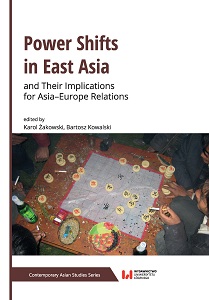Author(s): Hongfei Gu / Language(s): English
Publication Year: 0
Is there a possibility that there will be cooperation between two sides with a big gap? If so, could this cooperation be sustainable development? This question has always been a hot issue in international cooperation research. The “16+1” framework is a relatively new cooperation format initiated by China with 16 CEE countries in 2012. Since its formation, the “16+1” has made some progress in strengthening dialogue and cooperation between China and CEE countries. The heads of state of the member countries meet annually and each meeting results in a list of agreements. During the 5th and most recent summit, held in Riga, Chinese premier Li Keqiang formally launched a 10 billion euro investment fund to finance infrastructure and production capacity projects (“The Riga Guidelines for Cooperation between China and Central and Eastern European Countries,” n.d.). While the above initiatives have been made so far, it is not difficult to trace that in China and the CEE countries, the significant differences in the countries among the CEE made for a complexity of interaction. First of all, the CEE countries are not only a strictly strategic entity, but not a political or economic entity, and the two sides are now facing the problem of “one to sixteen.” Moreover, for the relationship between China and the EU, China cannot be a member state or even a power to arrange the sixteen countries as a political group. Secondly, despite the continuous warming of economic and trade cooperation between the two sides, such as the Czech Republic, Poland, Hungary, Serbia and other countries with China, in terms of bilateral trade, there are still huge differences for both exports and imports, and bilateral ties show an asymmetric pattern from the political and economic perspectives. Thirdly, while the CEE countries are developing economic and trade relations with China, there are big differences regarding foreign policy toward China among the CEE countries: sixteen states are not consistent with their foreign policies toward China, and at the same time, there is still a disagreement between the two sides on political, economic, and human rights; Tibet and Taiwan issues; the arms embargo and other relevant issues. Therefore, the development of China’s relations with CEE countries is now facing opportunities and challenges simultaneously. The asymmetry of bilateral cooperation requires China to optimize its policies on CEE countries for further development. This paper will analyze the CEE countries’ foreign policy toward China via a 15 language1 database among all CEE countries since the two sides established diplomatic ties. Using big data, the development of small countries’ foreign policies will be analyzed while confronting big powers through game theory, then it will be tested if it is possible for such asymmetric relationships to work.
More...



